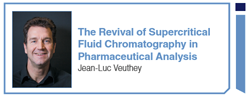Sample Preparation: The State of the Art
LCGC Europe
In this extended special feature to celebrate the 30th anniversary edition of LCGC Europe, leading figures from the separation science community explore contemporary trends in separation science and identify possible future developments. We asked key opinion leaders in the field to discuss the current state of the art in sample preparation.
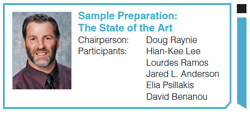
In this extended special feature to celebrate the 30th anniversary edition of LCGC Europe, leading figures from the separation science community explore contemporary trends in separation science and identify possible future developments. We asked key opinion leaders in the field to discuss the current state of the art in sample preparation.
Compiled byAlasdair Matheson, Editor-in-Chief, LCGC Europe
Doug Raynie: How valuable is the use of automated sample preparation techniques, such as supercritical fluid extraction (SFE), microwave extraction, automated solvent extraction (ASE), and solid-phase extraction (SPE), in modern laboratories?
Lourdes Ramos: The development and commercialization of appropriate techniques and systems allowing either total or partial integration and automation of the several steps involved in sample preparation is an increasing demand in modern analytical laboratories. This is particularly true for those involved in routine control and monitoring programmes because of the growing pressure to analyze as many samples and analytes as possible quickly and with minimum consumption of reagents and waste generation. However, automatic systems also usually improve the repeatability and robustness of the analyses and preserve the integrity of unstable matrices and analytes, which are relevant analytical aspects for all types of analytical laboratories.
Jared L. Anderson: Automation is very important in modern analytical laboratories that must analyze many samples every day. Sample preparation can be very timeâconsuming and tedious, so fully or partially automated methods significantly reduce the time required for the analytical method, while also typically increasing precision. For this reason, new and emerging sample preparation techniques that will likely have the greatest impact are those that can be automated.
David Benanou: In my laboratory automation mainly involves SPE with a vacuum manifold, which is a time-consuming manual extraction, followed by a concentration under nitrogen and conventional injection into a liquid chromatography (LC) or gas chromatography (GC) system. Automated solvent extraction can be performed using commercially available systems and is relatively inexpensive. This can also be achieved by accelerated solvent extraction (ASE), which involves lower consumption of solvent but is more expensive. SFE was popular 20 years ago, but is not selective enough for many of the applications in our laboratory.
Doug Raynie: What about preset sample preparation methods, in kit form, such as QuEChERS? Are these methodologies decreasing method development time and making sample preparation a more routine, predictable laboratory operation?
Hian-Kee Lee: This approach is very useful for known applications, or applications that need only slight modifications. Apart from research laboratories, analytical chemists in industrial, commercial, and government laboratories sometimes just need to be able to purchase self-contained kits and use them directly. They would prefer not to have to premix or preâassemble different components for their routine analytical tasks. And, yes, one should expect to obtain predictable results for known analytical problems. This certainly is important when it comes to quality control relating to the analyses.
Lourdes Ramos: Methods based on dispersive solidâphase extraction (d-SPE)-and QuEChERS is the most representative example of this-have been rapidly accepted and are now routinely applied for different application areas, particularly for environmental and food analysis. Their simplicity, flexibility, and feasibility to perform the extraction and purification of the target analytes with minimum sample manipulation are key aspects, and explain their wide acceptance. It should also be mentioned that, as originally designed, the QuEChERS procedure provided extracts feasible for subsequent LC and GC analysis, which is a particularly interesting feature when analytes of divergent nature must be analyzed.
David Benanou: The QuEChERS technique offers time savings in sample preparation but cannot be used as a single step before injection, whatever matrix is used. QuEChERS can be assimilated as a pre-cleanup option. Of course, several laboratories apply the QuEChERS technique only and then perform the injection, but to the detriment of robustness and chromatographic resolution. The benefit is obtaining quick results, but the disadvantage is daily maintenance for the column, pre-column, and injector.
Doug Raynie: Are specific detectors, such as mass spectrometry, eliminating or greatly reducing the need for or the use of sample preparation in your laboratory today?
Hian-Kee Lee: This is an interesting point. There have been many studies that attempt to do away with sample preparation in favour of direct sample introduction. The most obvious sample matrix that this may be suitable for is water. However, even seemingly “clean” water may be sufficiently complex to cause problems with direct analysis. Possibly, for certain classes of compounds where one may use purge-and-trap (P&T), or headspace techniques, direct analysis may be feasible, but then again, aren’t P&T and headspace sampling sample preparation methods, too?
Selectivity or specificity only tells part of the story, I believe. Sometimes detectors can still be overwhelmed by undesirable matrix components. One would rather get rid of them because they will always cause problems if present. And you can only ensure their absence, perhaps not always 100% of the time, but at least to a high degree, by conducting suitable preparation.
Lourdes Ramos: The accurate determination of trace organic microcontaminants requires enhanced selectivity. This can be achieved through the treatment protocol applied for sample preparation or alternatively, in some cases, by increasing the selectivity of the final instrumental determination step. The latter can be achieved through the use of chromatographic (in general, multidimensional) techniques allowing improved chromatographic resolution or by using highly selective detectors, typically those based on tandem MS or highâresolution MS. In my group, for some applications, we do take advantage of these modern techniques to reduce the requirement for exhaustive sample cleanup, but never to the point of compromising the sensitivity of the determination or ruining one column for each analysis.
Jared Anderson: This is a very broad question and I think to fully answer it requires a couple of points to be considered. If the sample being analyzed is fairly simple, that is, if the matrix is not complicated or there are no strong matrix effects, employing analyteâspecific detectors can certainly improve detection limits or limits of quantitation of the method. However, if the matrix is extremely complex and the analytes are highly susceptible to matrix components, then sample preparation is often unavoidable. Adequate sample preparation is not only necessary to detect the analyte(s) at desired levels, but it is also even more necessary to protect instrumentation or chromatographic columns from contamination that can affect analytical results and possibly even result in instrument downtime as a result of cleaning and decontamination.
Elia Psillakis: Sample preparation offers selectivity, sensitivity, and eliminates-or greatly reduces-matrix components. The environmental samples we run for routine trace analysis are hardly ever clean. If we decided to eliminate or reduce sample preparation, then we would have to spend more time cleaning our analytical instrumentation or have to switch to a more expensive one. Neither of these options is considered an act of lean thinking in my laboratory.
Doug Raynie: What are the most complicated sample preparation challenges that exist in your laboratory today?
Hian-Kee Lee: In my laboratory, it is perhaps dealing with relatively complex aqueous matrices, and also trying to develop more universal methods to deal with too many contaminants!
Lourdes Ramos: At present, we are particularly interested in the development of generic sample preparation and instrumental methods for the determination of the so-called “known unknown” organic pollutants and the potential identification of unknowns. The development of sample treatment protocols appropriate for this type of analysis is not really trivial. They should allow the simultaneous and quantitative extraction of as many compounds as possible, despite their potentially divergent natures, without altering their chemical structure.
Jared Anderson: My laboratory works with a variety of samples including food products, environmental samples, and biological samples. With all of these samples come unique matrix components that can have deleterious effects on the overall method, and can even give you false results! The most complicated challenges we face today are working with biological samples. For several years now, my group has been developing new approaches for nucleic acid sample preparation and combining these sample preparation methods with real-time polymerase chain reaction (RT-PCR). The polymerases used in RT-PCR are extremely sensitive to matrix components, such as lipids and inhibitors, and characteristics of the reaction buffer, including pH and ionic strength, thereby requiring careful approaches that can selectively isolate nucleic acids.
Elia Psillakis: We work with microextraction and try to improve sensitivity by forcing analytes to move faster from the sample into the extracting phase. When analytes take the fast lane, understanding the system is a must if we want to control it. This is why we commonly have complex rather than complicated challenges and, ironically, they are all related to the simplest steps we take in the laboratory. The fundamental challenges we, and many other disciplines, still face include understanding interfaces and their properties, how and when analytes will cross them, or even predicting the performance of mixing. Sample preparation might look simple, but the processes involved are complex and not wellâunderstood. Until we have a thorough understanding of the synergistic effects of the experimental parameters controlled during sample preparation, the cognitive task of relating experimental results to theory will remain a fascinating challenge.
Doug Raynie: What do you consider the best tools in your toolbox of sample preparation methodologies available in your laboratory today?
Hian-Kee Lee: If I may be permitted to redefine “tools” as “resources”, manpower such as students and postdoctoral fellows are considered most important to me! But seriously, if you are referring to instrumentation and hardware, in my laboratory, it would have to the modern autosamplers, as well as GC–MS and LC–MS systems.
Lourdes Ramos: For liquid (or dissolved) samples, SPE and its different modifications and format versions, in particular SPME and d-SPE. For semi-solid and solid samples, matrix-solid phase dispersion (MSPD) and some enhanced solvent extraction techniques, such as microwave assisted extraction (MAE), ultrasonic assisted extraction (UAE), and pressurized liquid extraction (PLE). Most of these techniques can also be used in a combined manner, which usually results in more integrated or simplified analytical procedures.
Elia Psillakis: We enjoy pushing our microextraction methods to extremes and our best tool to accelerate extraction kinetics of organics during headspace microextraction is sampling under vacuum. Analytes with a low Henry’s Law constant simply fall for that. Breaking micro-volumes of organic liquid acceptor phases into water samples is essential to increase analyte “flow” rates. Vortex agitation is the fastest energy efficient tool we have for this break-up because it maximizes the interfacial surface. We also think that everyday polymeric materials can perform exceptionally well compared to traditional sorbent materials. Sorptive extraction is based on analyte partitioning between the sample and the sorbent. Any everyday material can become a sorbent as long as it meets the criteria of high affinity for the analyte, purity, inertness, and stability.
David Benanou: Extraction and enrichment based on stirâbar sorptive extraction (SBSE) is applied routinely in our research laboratory and in all Veolia Expertise Laboratories all over the world. Fifteen years ago, we mainly applied the SBSE technique to taste and odour problems in drinking water, but then very quickly applied it to all environmental matrices, as well as polymers. Indeed, it has considerably changed our philosophy. Once the compounds are trapped on the bar, these compounds remain stable for one month at room temperature. More and more sectors are using this technique, including agribusiness, pharmaceuticals, perfumes, and cosmetics Another technique of choice involves automation and miniaturization: micro-liquid–liquid extraction (MLLE) followed by the large volume injection (LVI), for example, 50–100 µL into a programmed temperature vaporizer (PTV) injector. The main advantage is that by injecting 50 or 100 times more into the injector, the sample volume can be reduced by the same proportion to obtain the same limit of quantification. There is currently a multitude of modules associated with robots that can reproduce the entire set of manual steps of a sample preparation until injection. These methods are also highly reproducible. Any analytical application of automated sample preparation finds its interest. “On line” or “off line”, these systems can be dedicated to the extraction and purification of liquid matrices, solids, or pastes.
Doug Raynie: Chromatography with its various detection options has been a boon to the analysis of complex, multicomponent mixtures of analytes. What do you think of the situation when someone develops a procedure for only one analyte?
Hian-Kee Lee: I think it is an undesirable trend. If this single analyte is of utmost importance on a global scale, it may be justified, but surely the capabilities of chromatography, especially when coupled to MS, should be fully taken advantage of to solve analytical problems. It is fair enough if one is developing a molecularlyâimprinted polymer (MIP) for a particularly important target compound. But otherwise, why spend time and effort just for a single analyte, especially when this analyte represents just one of a whole class of compounds, for example, focusing on benzo[a]pyrene when there are close to two dozen polycyclic aromatic hydrocarbons (PAHs)?
Lourdes Ramos: Most of the LC- and GC-based techniques in use today provide separation and detection capabilities that were difficult to anticipate only a few decades ago. In my opinion, the need for unambiguous determination of individual analytes in complex multicomponent mixtures was one of the main incentives promoting progress in these fields. Consequently, it is in this type of analysis where the use of such powerful separation techniques makes more sense. Of course, in some cases, the analytical interest can focus, for whatever reason, on a single compound, but in these cases sensors or techniques allowing direct MS sample analysis could probably be considered fast, elegant, and valuable analytical alternatives to those relying on chromatographic techniques.
Jared Anderson: Several years ago, I was living in Toledo, Ohio, USA, when the entire city was told not to drink the water because of the presence of microcystin, which originated from cyanobacteria within algal blooms in Lake Erie. At that time, there were only a couple laboratories in the country that were capable of running the Environmental Protection Agency (EPA) method for microcystin analysis. Therefore, developing a method for multicomponent mixtures of analytes in this case would not have been helpful because they were targeting the concentration of a couple of the more toxic microcystin variants. Therefore, I have no problems with scientists developing procedures for only one analyte if that analyte is particularly toxic and the matrices involved within the analysis fully represent a real-world sample.
Doug Raynie: Does onsite analysis require the deployment of portable sample preparation devices and analytical instrumentation?
Hian Kee Lee: No, I don’t think so. For remote or hostile environments, onsite sample preparation (and analysis) would be better served by portable and miniaturized devices and instrumentation. However, there are locations with the proper infrastructure that allow conventional instruments to be installed. Referring specifically to only water- and aqueous-based analysis, these include, but are not limited to, water-treatment plants, drinking water production facilities, water reclamation plants, food and beverage factories, pharmaceutical plants, and hospital bedsides, where routine monitoring is necessary and critical. An automated total analytical system based on conventional GC–MS and LC–MS, for example, can potentially be installed and operated at these sites. Certain samples like soil, food, and human bodily fluids pose greater challenges, and onsite portable systems would be more appropriate.
Lourdes Ramos: Yes, indeed. Real in-situ (or field) analytical determinations require the design and development of really portable, that is small-sized instruments, and essentially power-independent devices allowing complete sample treatment and analyte instrumental determination, either in a single system (as in the case of sensors) or separately. Research in this field is active but further progress is still required regarding the accurate manipulation of micro- and nano-fluids in small environments and the setting-up of, for example, battery-operated hand-portable devices.
Elia Psillakis: The use of portable analytical instrumentation for onsite analysis has become an established and low-cost practice. Although these instruments can deal with complex environmental samples to some extent, their sensitivity is still lower than those of their non-portable equivalents. At the same time, solving environment-related issues is becoming an increasingly complex task, and in many cases decisionâmaking depends on our ability to detect onsite hazardous contaminants at very low concentrations. Portable sample preparation devices can, and will, overcome these limitations.
David Benanou: The philosophy for onsite analysis is to obtain real-time results closer to semi-quantitative analysis than a full quantitative analysis. In some cases a full system automation, such as enrichment cleanup and GC–MS or LC–MS analysis, can be used, but in the majority of cases, the tendency is towards specific probes and even low-cost specific probes. No probe today can replace the sensitivity and selectivity of chromatography linked to MS, but it remains an alternative and economically interesting when you have to perform a lot of analyses rapidly or when you have to manage a process.
Doug Raynie: If you had a crystal ball, where would you predict that sample prep would be in 5–10 years?
Hian-Kee Lee: Seamless integration of not only sample preparation and analysis, but also the sampling component. This would be very challenging for solid samples, such as fruits, vegetables, and soils, but would lead to a truly automated analytical platform.
Lourdes Ramos: We have recently observed an increasing incorporation of advances achieved in other research areas to the sample preparation process. For example, the improved features associated with some of the novel nanoâsized and biomimetic materials have been demonstrated to enhance the efficiency and selectivity of some analytical protocols. These novel approaches based on the use of new materials and nanotechnologies have stimulated new advances and application studies but, at the same time, they require changing our conventional approach to developing analytical methods and have made a deeper understanding of the processes involved in sample treatment necessary.
Jared Anderson: Sample preparation is changing very rapidly and although the crystal ball is bright, it is also a bit cloudy (I’ve never been good at predictions!). I would say there are a couple features that are an almost certainty. I believe sample preparation will continue to expand and be an irreplaceable component of analysis. Methods will become more miniaturized to be compatible with the miniaturization of instrumentation and the rapidly growing area of point-of-care diagnostics. I also believe 3D printing will play a growing role in end users being able to design their own micro-extraction devices or sample preparation modules. Without a doubt, we are moving towards sample preparation approaches that will continually require less solvent while achieving the same selectivity and still being fully automated.
Elia Psillakis: I can clearly envisage free and openâsource sharing of sample preparation device designs and new high performance materials used as extracting phases. I can picture a larger choice of automated sample preparation methods and an improvement in our fundamental understanding of sample preparation. I can see more sample preparation outside the laboratory and in the field, coupled to low power and inexpensive detectors doing selective and, ultimately, sensitive detection of the most challenging groups of pollutants. The future looks bright for sample preparation research!

Hian-Kee Lee is a professor in the Department of Chemistry at the National University of Singapore, in Singapore.
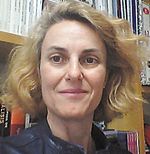
Lourdes Ramos is a senior scientific researcher at the Instituto de Química Orgánica General (IQOG -CSIC), in Madrid, Spain.
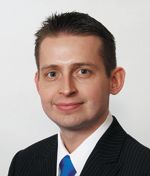
Jared L. Anderson is a professor of chemistry in the Department of Chemistry at the Iowa State University, in Ames, Iowa USA.
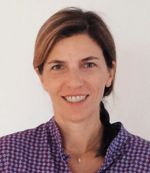
Elia Psillakis is a professor of water chemistry at the School of Environmental Engineering Technical University of Crete, in Crete, Greece.

David Benanou is an expert research & analytical chemistry at the Veolia Research Center, in Maisons Laffitte, France.
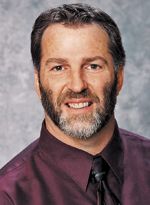
Doug Raynie is a department head and associate professor at South Dakota State University, in South Dakota, USA.
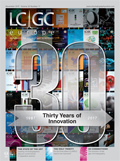
Study Explores Thin-Film Extraction of Biogenic Amines via HPLC-MS/MS
March 27th 2025Scientists from Tabriz University and the University of Tabriz explored cellulose acetate-UiO-66-COOH as an affordable coating sorbent for thin film extraction of biogenic amines from cheese and alcohol-free beverages using HPLC-MS/MS.
Multi-Step Preparative LC–MS Workflow for Peptide Purification
March 21st 2025This article introduces a multi-step preparative purification workflow for synthetic peptides using liquid chromatography–mass spectrometry (LC–MS). The process involves optimizing separation conditions, scaling-up, fractionating, and confirming purity and recovery, using a single LC–MS system. High purity and recovery rates for synthetic peptides such as parathormone (PTH) are achieved. The method allows efficient purification and accurate confirmation of peptide synthesis and is suitable for handling complex preparative purification tasks.








